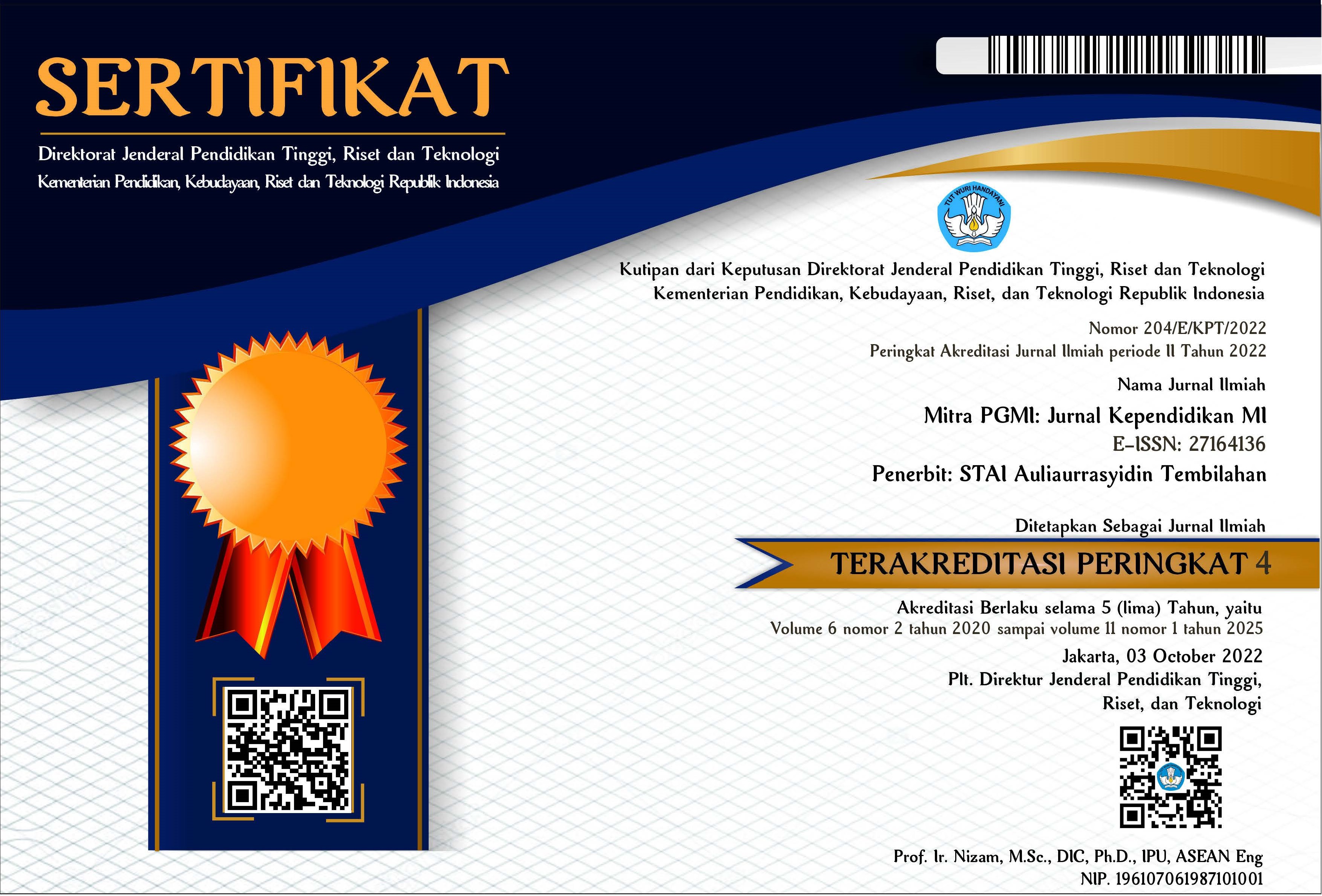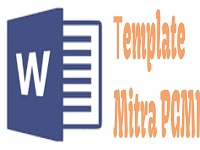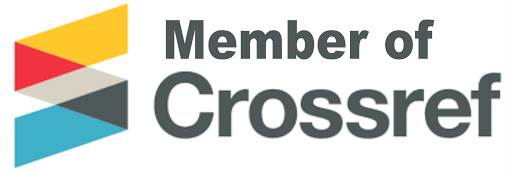Improving the reading comprehension skills of fourth grade MI students through the Know-Want to Know-Learned (KWL) strategy assisted by series picture media
DOI:
https://doi.org/10.46963/mpgmi.v11i1.2351Keywords:
Reading Comprehension, KWL, Picture SeriesAbstract
The preliminary reading comprehension test revealed that 25 students scored below the Minimum Completion Criteria (KKM), while 3 students scored above it, with an average score of 51.15. This study aims to improve students’ reading comprehension using the Know-Want to Know-Learned (KWL) strategy, supported by series image media. A quasi-experimental design with a Nonequivalent Control Group was used, consisting of three groups: the first experimental group using KWL with series image media, the second experimental group using KWL, and the control group applying conventional methods. The ANOVA test showed a significant difference with a p-value of 0.004 (p < 0.05). The average posttest scores were 83.00 for the first experimental class, 80.47 for the second experimental class, and 74.30 for the control class. The n-gain scores indicated high categories for both experimental classes (0.78 and 0.75) and a medium category for the control class (0.68). These results suggest that the KWL strategy significantly enhances students’ reading comprehension.
Downloads
References
Abidin, Y. (2012). Pembelajaran Bahasa Berbasis Pendidikan Karakter. Bandung: PT. Refika Aditama.
Alpian, V. S., & Yatri, I. (2022). Analisis Kemampuan Membaca Pemahaman pada Siswa Sekolah Dasar. Edukatif : Jurnal Ilmu Pendidikan, 4(4), Halm 5573-5581. https://doi.org/10.33222/jlp.v8i2.2818
Anjelinah, N. R. A., & Liansari, V. (2023). Strategi Kwl (Know Want to Know Learned) Pada Kemampuan Membaca Siswa Sekolah Dasar. Pendas: Jurnal Ilmiah Pendidikan Dasar, 8(1), 3936–3953. https://doi.org/10.23969/jp.v8i1.8700
Arsyad, A. (2017). Media Pembelajaran. Jakarta: Raja Grafindo Persada.
Dalman. (2017). Keterampilan Membaca. Jakarta: Rajawali Pers.
Elviriyanti. (2024). Penerapan Strategi Know -What to Know-Learned Untuk. Jurnal Review Pendidikan dan Pengajaran, 7(1), 1903–1908.
Fatah, A. H., & Risfina, A. M. (2023). Teori Pemrosesan Informasi dan Implikasinya Dalam Pembelajaran. Jurnal Ilmiah Mandala Education, 9(3), 1632–1641. https://doi.org/10.58258/jime.v9i3.5256
Fauzyah, R. T. (2024). Pengaruh Strategi KWL (Know-Want to Know-Learned) Terhadap Keterampilan Membaca Pemahaman Siswa Kelas IV SDN Cipayung 01 Tangerang Selatan. 7(1), 50–63.
Herlinyanto. (2015). Membaca Pemahaman Dengan Strategi KWL. Yogyakarta: CV BUDI UTAMA.
Nurhayati, F. F., Yundayani, A., & Herlina, D. (2021). Prosiding Seminar Nasional Pendidikan STKIP Kusuma Negara III Peningkatan Pemahaman Membaca Siswa Melalui Media Gambar Berseri. 1, 197–205.
Nurlisa, Salahuddin, A., & Susilawat, W. O. (2023). Pengaruh Strategi KWL (Know, Want, Learn) terhadap Kemampuan Membaca Pemahaman Siswa Kelas IV SD: Studi Literatur. Journal of Vocational Education and Information Technology, 4(1), 48–53. http://ejournal.undhari.ac.id/index.php/jveit/article/view/708%0Ahttp://ejournal.undhari.ac.id/index.php/jveit/article/download/708/391
Olistiani, R. (2015). Penerapan Metode Kwl (Know - Want to Know – Learned) Dalam Pembelajaran Membaca Intensif Tajuk Rencana Pada Siswa Kelas XI SMA. Ejournal UPI Jurusan Pendidikan Bahasa dan Sastra Indonesia FPBS, Universitas Pendidikan Indonesia, 1–10.
Paivio, A. (1971). Imagery and Verbal Processes. New York: Holt, Rinehart and Winston.
Pakaya, Wibawa, B., Mahdiyah., & J, A. (2023). Metode Penelitian Pendidikan. Jawa timur: Nawa Litera Publishing.
Rahim, F. (2011). Pengajaran Membaca Di Sekolah Dasar. Jakarta: Bumi Aksara.
Rosmana, P. S., Ruswan, A., Alifah, A. N., Pratiwi, K., Fitriani, M. G., Huda, N., Ramadhani, S., & Nurnikmah, U. (2024). Pentingnya Media Pembelajaran dalam Perencanaan Pembelajaran Guru Sekolah Dasar. Jurnal Pendidikan Tambusai, 8(1), 3048–3054. https://jptam.org/index.php/jptam/article/view/12840/9856
Rumelhart, D. E. (1980). Schemata: The building blocks of cognition. Center for Human Information Processing, University of California, San Diego.
Somadayo, S. (2011). Strategi dan Teknik Pembelajaran Membaca. Yogyakarta: Graha Ilmu.
Suardi & Marwan. (2019). Strategi Pembelajaran (Nomor March).
Sugiyono. (2017). Metode Penelitian Kuantitatif, Kualitatif, dan R&D (2022 ed.). Alfabeta.
Usmadi. (2020). Pengujian Persyaratan Analisis (Uji Homogenitas Dan Uji Normalitas). Inovasi Pendidikan, 7(1), 50–62. https://doi.org/10.31869/ip.v7i1.2281
Wardani, N. W., Kusumaningsih, W., & Kusniati, S. (2024). Analisis Penggunaan Media Pembelajaran terhadap Hasil Belajar Siswa Sekolah Dasar. Jurnal Inovasi, Evaluasi dan Pengembangan Pembelajaran (JIEPP), 4(1), 134–140. https://doi.org/10.54371/jiepp.v4i1.389
Downloads
Published
Issue
Section
License
Copyright (c) 2025 Anisa Nur Awaliah, Yayan Carlian, Muhammad Rifqi Mahmud

This work is licensed under a Creative Commons Attribution-ShareAlike 4.0 International License.
Authors who publish with this journal agree to the following terms:
1. Copyright on any article is retained by the author(s).
2. The author grants the journal, right of first publication with the work simultaneously licensed under a Creative Commons Attribution shareAlike 4.0 International License that allows others to share the work with an acknowledgment of the work’s authorship and initial publication in this journal.
3. Authors are able to enter into separate, additional contractual arrangements for the non-exclusive distribution of the journal’s published version of the work (e.g., post it to an institutional repository or publish it in a book), with an acknowledgment of its initial publication in this journal.
4. Authors are permitted and encouraged to post their work online (e.g., in institutional repositories or on their website) prior to and during the submission process, as it can lead to productive exchanges, as well as earlier and greater citation of published work.
5. The article and any associated published material is distributed under the Creative Commons Attribution-ShareAlike 4.0 International License








2.png)


